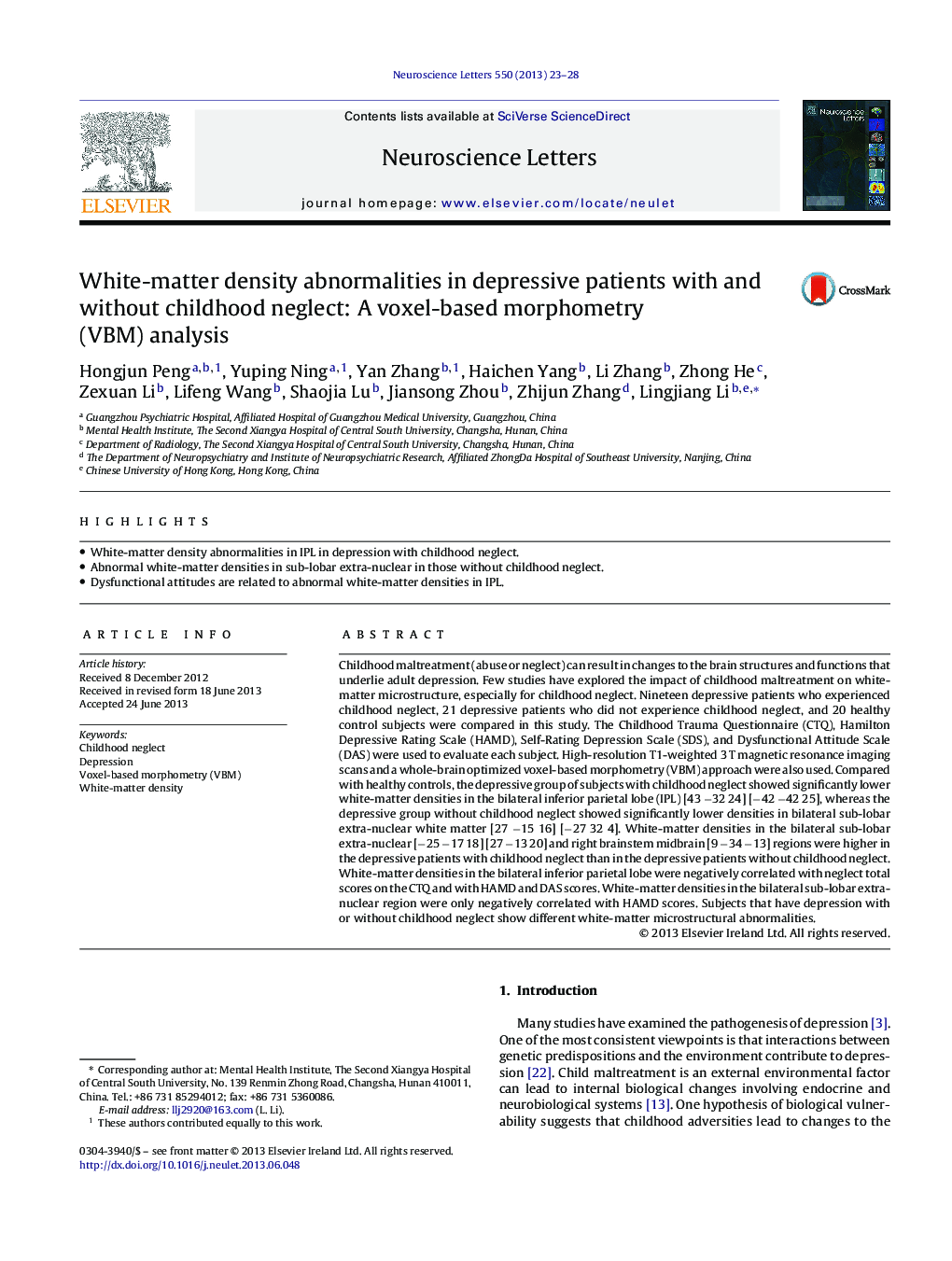| Article ID | Journal | Published Year | Pages | File Type |
|---|---|---|---|---|
| 6282856 | Neuroscience Letters | 2013 | 6 Pages |
Abstract
Childhood maltreatment (abuse or neglect) can result in changes to the brain structures and functions that underlie adult depression. Few studies have explored the impact of childhood maltreatment on white-matter microstructure, especially for childhood neglect. Nineteen depressive patients who experienced childhood neglect, 21 depressive patients who did not experience childhood neglect, and 20 healthy control subjects were compared in this study. The Childhood Trauma Questionnaire (CTQ), Hamilton Depressive Rating Scale (HAMD), Self-Rating Depression Scale (SDS), and Dysfunctional Attitude Scale (DAS) were used to evaluate each subject. High-resolution T1-weighted 3Â T magnetic resonance imaging scans and a whole-brain optimized voxel-based morphometry (VBM) approach were also used. Compared with healthy controls, the depressive group of subjects with childhood neglect showed significantly lower white-matter densities in the bilateral inferior parietal lobe (IPL) [43 â32 24] [â42 â42 25], whereas the depressive group without childhood neglect showed significantly lower densities in bilateral sub-lobar extra-nuclear white matter [27 â15 16] [â27 32 4]. White-matter densities in the bilateral sub-lobar extra-nuclear [â25 â17 18] [27 â13 20] and right brainstem midbrain [9 â34 â13] regions were higher in the depressive patients with childhood neglect than in the depressive patients without childhood neglect. White-matter densities in the bilateral inferior parietal lobe were negatively correlated with neglect total scores on the CTQ and with HAMD and DAS scores. White-matter densities in the bilateral sub-lobar extra-nuclear region were only negatively correlated with HAMD scores. Subjects that have depression with or without childhood neglect show different white-matter microstructural abnormalities.
Related Topics
Life Sciences
Neuroscience
Neuroscience (General)
Authors
Hongjun Peng, Yuping Ning, Yan Zhang, Haichen Yang, Li Zhang, Zhong He, Zexuan Li, Lifeng Wang, Shaojia Lu, Jiansong Zhou, Zhijun Zhang, Lingjiang Li,
